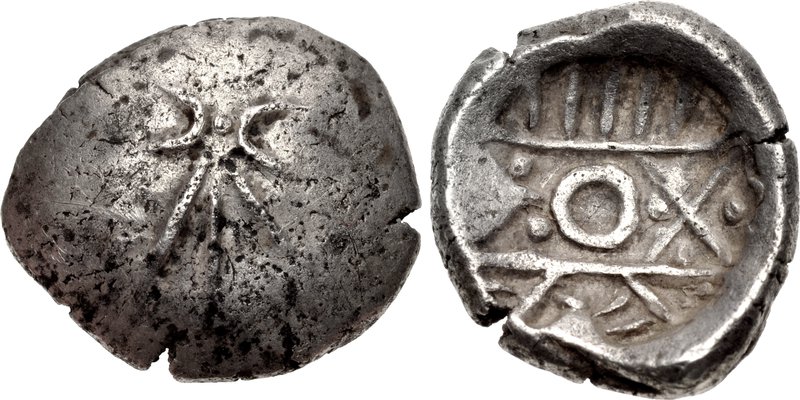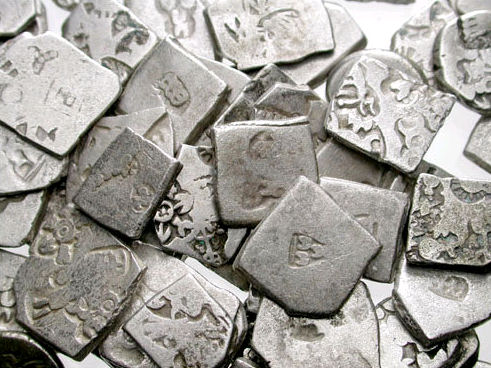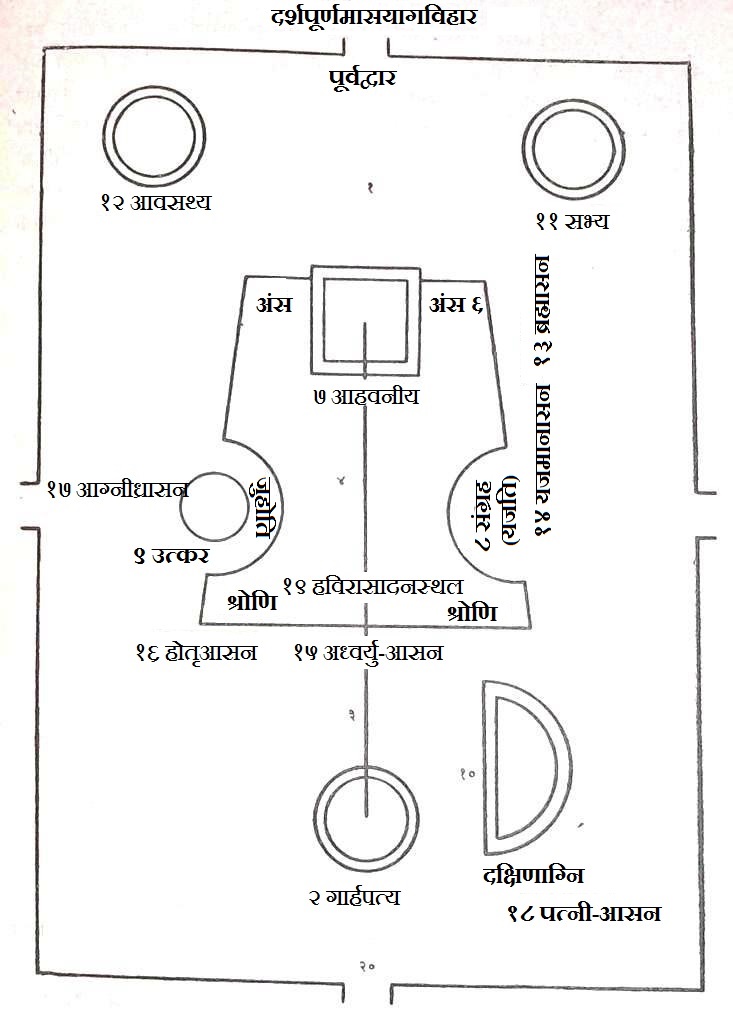|
Coinage Of India
The Coinage of India began anywhere between early 1st millennium BCE to the 6th century BCE, and consisted mainly of copper and silver coins in its initial stage.Allan & Stern (2008) The coins of this period were ''Karshapanas'' or ''Pana''. A variety of earliest Indian coins, however, unlike those circulated in West Asia, were stamped bars of metal, suggesting that the innovation of stamped currency was added to a pre-existing form of token currency which had already been present in the Janapadas and Mahajanapada kingdoms of the Early historic India. The kingdoms that minted their own coins included Gandhara, Kuntala, Kuru, Magadha, Panchala, Shakya, Surasena, Surashtra and Vidarbha etc. The tradition of Indian coinage in the 2nd millennium evolved with Indo Islamic rule in India.Allan & Stern (2008) and the British Raj in the 19th century.Sutherland (2008) Origin of currency in Indian subcontinent Prehistoric and Bronze Age origins Cowry shells were first used in ... [...More Info...] [...Related Items...] OR: [Wikipedia] [Google] [Baidu] |
Maurya Empire
The Maurya Empire, or the Mauryan Empire, was a geographically extensive Iron Age historical power in the Indian subcontinent based in Magadha, having been founded by Chandragupta Maurya in 322 BCE, and existing in loose-knit fashion until 185 BCE. Quote: "Magadha power came to extend over the main cities and communication routes of the Ganges basin. Then, under Chandragupta Maurya (c.321–297 bce), and subsequently Ashoka his grandson, Pataliputra became the centre of the loose-knit Mauryan 'Empire' which during Ashoka's reign (c.268–232 bce) briefly had a presence throughout the main urban centres and arteries of the subcontinent, except for the extreme south." The Maurya Empire was centralized by the conquest of the Indo-Gangetic Plain, and its capital city was located at Pataliputra (modern Patna). Outside this imperial center, the empire's geographical extent was dependent on the loyalty of military commanders who controlled the armed cities sprinkling it. During Ash ... [...More Info...] [...Related Items...] OR: [Wikipedia] [Google] [Baidu] |
British Raj
The British Raj (; from Hindi ''rāj'': kingdom, realm, state, or empire) was the rule of the British Crown on the Indian subcontinent; * * it is also called Crown rule in India, * * * * or Direct rule in India, * Quote: "Mill, who was himself employed by the British East India company from the age of seventeen until the British government assumed direct rule over India in 1858." * * and lasted from 1858 to 1947. * * The region under British control was commonly called India in contemporaneous usage and included areas directly administered by the United Kingdom, which were collectively called British India, and areas ruled by indigenous rulers, but under British paramountcy, called the princely states. The region was sometimes called the Indian Empire, though not officially. As ''India'', it was a founding member of the League of Nations, a participating nation in the Summer Olympics in 1900, 1920, 1928, 1932, and 1936, and a founding member of the United Nations in San F ... [...More Info...] [...Related Items...] OR: [Wikipedia] [Google] [Baidu] |
Punch-marked Coins
Punch-marked coins, also known as ''Aahat coins'', are a type of early coinage of India, dating to between about the 6th and 2nd centuries BC. It was of irregular shape. History The study of the relative chronology of these coins has successfully established that the first punch-marked coins initially only had one or two punches, with the number of punches increasing over time. The first coins in India may have been minted around the 6th century BC by the Mahajanapadas of the Indo-Gangetic Plain. 19th-century proposals which suggested an origin from as early as 1000 BC, independent of the introduction of coins in Asia Minor, are "no longer given any credence". Silver coins were certainly being produced in the Achaemenid Satrapy of Gandāra, by the mid-4th century BC, before the Indian campaign of Alexander the Great, in 327 BC, as Plutarch noted Taxiles (Ambhi) of Taxila exchanged coined tribute with Alexander. According to Joe Cribb, Indian punch-marked coins go back to t ... [...More Info...] [...Related Items...] OR: [Wikipedia] [Google] [Baidu] |
The First South Asian Coins 400-300 BCE, Room 33 Exhibit Of The British Museum
''The'' () is a grammatical article in English, denoting persons or things already mentioned, under discussion, implied or otherwise presumed familiar to listeners, readers, or speakers. It is the definite article in English. ''The'' is the most frequently used word in the English language; studies and analyses of texts have found it to account for seven percent of all printed English-language words. It is derived from gendered articles in Old English which combined in Middle English and now has a single form used with pronouns of any gender. The word can be used with both singular and plural nouns, and with a noun that starts with any letter. This is different from many other languages, which have different forms of the definite article for different genders or numbers. Pronunciation In most dialects, "the" is pronounced as (with the voiced dental fricative followed by a schwa) when followed by a consonant sound, and as (homophone of pronoun ''thee'') when followed by a v ... [...More Info...] [...Related Items...] OR: [Wikipedia] [Google] [Baidu] |
Indian Subcontinent
The Indian subcontinent is a list of the physiographic regions of the world, physiographical region in United Nations geoscheme for Asia#Southern Asia, Southern Asia. It is situated on the Indian Plate, projecting southwards into the Indian Ocean from the Himalayas. Geopolitically, it includes the countries of Bangladesh, Bhutan, India, Maldives, Nepal, Pakistan, and Sri Lanka."Indian subcontinent". ''Oxford Dictionary of English, New Oxford Dictionary of English'' () New York: Oxford University Press, 2001; p. 929: "the part of Asia south of the Himalayas which forms a peninsula extending into the Indian Ocean, between the Arabian Sea and the Bay of Bengal. Historically forming the whole territory of Greater India, the region is now divided into three countries named Bangladesh, India and Pakistan." The terms ''Indian subcontinent'' and ''South Asia'' are often used interchangeably to denote the region, although the geopolitical term of South Asia frequently includes Afghanist ... [...More Info...] [...Related Items...] OR: [Wikipedia] [Google] [Baidu] |
Rupee
Rupee is the common name for the currencies of India, Mauritius, Nepal, Pakistan, Seychelles, and Sri Lanka, and of former currencies of Afghanistan, Bahrain, Kuwait, Oman, the United Arab Emirates (as the Gulf rupee), British East Africa, Burma, German East Africa (as Rupie/Rupien), and Tibet. In Indonesia and the Maldives, the unit of currency is known as ''rupiah'' and ''rufiyaa'' respectively, cognates of the word rupee. The Indian rupees () and Pakistani rupees () are subdivided into one hundred paise (singular ''paisa'') or pice. The Nepalese rupee (रू) subdivides into one hundred paisa (singular and plural) or four sukaas. The Mauritian, Seychellois, and Sri Lankan rupees subdivide into 100 cents. Etymology The Hindustani word ''rupyā'' is derived from the Sanskrit word ''rūpya'' (), which means "wrought silver, a coin of silver", in origin an adjective meaning "shapely", with a more specific meaning of "stamped, impressed", whence "coin". It is derived f ... [...More Info...] [...Related Items...] OR: [Wikipedia] [Google] [Baidu] |
Panini (grammarian)
Panini may refer to: People * Pāṇini (fl. 6th–4th century BCE), Sanskrit grammarian in ancient India * Panini (surname), Italian surname Art, entertainment, and media * Panini Group, a company headquartered in Modena, Italy, best known for its brand of collectible stickers ** Panini Comics, a publisher of comic books and magazines, part of Panini Group * Panini, a character in the animated television series ''Chowder'' * "Panini" (song), by American rapper Lil Nas X from his debut EP ''7'' Other uses * Panini (sandwich), a type of sandwich, Italian in origin * Panini (tribe), an alternative taxonomical grouping posited to classify chimpanzees and bonobos * Panini Modena, the original name of Modena Volley, an Italian volleyball team * Panini projection, a map projection used in image processing, named after Giovanni Paolo Panini * Panini Rural Municipality, Lumbini Province, Nepal See also * Pani (other) Pani is a surname in India. Pani or PANI may also refer t ... [...More Info...] [...Related Items...] OR: [Wikipedia] [Google] [Baidu] |
Satapatha Brahmana
The Shatapatha Brahmana ( sa, शतपथब्राह्मणम् , Śatapatha Brāhmaṇam, meaning 'Brāhmaṇa of one hundred paths', abbreviated to 'SB') is a commentary on the Śukla (white) Yajurveda. It is attributed to the Vedic sage Yajnavalkya. Described as the most complete, systematic, and important of the Brahmanas (commentaries on the Vedas), it contains detailed explanations of Vedic sacrificial rituals, symbolism, and mythology. Particularly in its description of sacrificial rituals (including construction of complex fire-altars), the Shatapatha Brahmana (SB) provides scientific knowledge of geometry (e.g. calculations of pi and the root of the Pythagorean theorem) and observational astronomy (e.g. planetary distances and the assertion that the Earth is circular) from the Vedic period. The Shatapatha Brahmana is also considered to be significant in the development of Vaishnavism as the origin of several Puranic legends and avatars of the RigVedic god Vi ... [...More Info...] [...Related Items...] OR: [Wikipedia] [Google] [Baidu] |
Rigveda
The ''Rigveda'' or ''Rig Veda'' ( ', from ' "praise" and ' "knowledge") is an ancient Indian collection of Vedic Sanskrit hymns (''sūktas''). It is one of the four sacred canonical Hindu texts (''śruti'') known as the Vedas. Only one Shakha of the many survive today, namely the Śakalya Shakha. Much of the contents contained in the remaining Shakhas are now lost or are not available in the public forum. The ''Rigveda'' is the oldest known Vedic Sanskrit text. Its early layers are among the oldest extant texts in any Indo-European language. The sounds and texts of the ''Rigveda'' have been orally transmitted since the 2nd millennium BCE. Philological and linguistic evidence indicates that the bulk of the ''Rigveda'' Samhita was composed in the northwestern region of the Indian subcontinent (see) Rigvedic rivers), most likely between 1500 and 1000 BCE, although a wider approximation of 19001200 BCE has also been given. The text is layered, consisting of the ... [...More Info...] [...Related Items...] OR: [Wikipedia] [Google] [Baidu] |
Arthashastra
The ''Arthashastra'' ( sa, अर्थशास्त्रम्, ) is an Ancient Indian Sanskrit treatise on statecraft, political science, economic policy and military strategy. Kautilya, also identified as Vishnugupta and Chanakya, is traditionally credited as the author of the text.: "References to the work in other Sanskrit literature attribute it variously to , and . The same individual is meant in each case. The '' Pańcatantra'' explicitly identifies Chanakya with ." The latter was a scholar at Takshashila, the teacher and guardian of Emperor Chandragupta Maurya. Some scholars believe them to be the same person, while a few have questioned this identification.; : "while in his character as author of an ''arthaśāstra'' he is generally referred to by his '' gotra'' name, ;": "T. Burrow... has now shown that Cāṇakya is also a ''gotra'' name, which in conjunction with other evidence makes it clear that we are dealing with distinct persons, the minister Cāṇaky ... [...More Info...] [...Related Items...] OR: [Wikipedia] [Google] [Baidu] |
Abrus Precatorius
''Abrus precatorius'', commonly known as jequirity bean or rosary pea, is a herbaceous flowering plant in the bean family Fabaceae. It is a slender, perennial climber with long, pinnate-leafleted leaves that twines around trees, shrubs, and hedges. The plant is best known for its seeds, which are used as beads and in percussion instruments, and which are toxic because of the presence of abrin. Ingestion of a single seed, well chewed, can be fatal to both adults and children. The plant is native to Asia and Australia. It has a tendency to become weedy and invasive where it has been introduced. Names ''Abrus precatorius'' is commonly known as jequirity, Crab's eye, or rosary pea, paternoster pea, love pea, precatory pea or bean, prayer bead, John Crow Bead, coral bead, red-bead vine, country licorice, Indian licorice, wild licorice, Jamaica wild licorice, gundumani/kundumani (in India/Tamil), Akar Saga, coondrimany, gidee gidee, Jumbie bead,Mendes (1986), p. 79. ratti / rettee / r ... [...More Info...] [...Related Items...] OR: [Wikipedia] [Google] [Baidu] |
Ratti
Ratti (Sanskrit: ) is a traditional Indian unit of measurement for mass. Based on the nominal weight of a Gunja seed (''Abrus precatorius''), it measured approximately 1.8 or 1.75 grains or 0.11339 g as standardized weight. It is still used by the jewellers in the Indian Subcontinent. History Ratti based measurement is the oldest measurement system in the Indian subcontinent, it was highly favoured because of the uniformity of its weights. The smallest weight in the Indus Valley civilization, historically called the ''masha'', was equal to 8 rattis. The Indus weights were the multiples of masha and the 16th factor was the most common weight of 128 ratti or 13.7 g. A unit called , literally a "hundred standard" or "hundred measures", representing 100 ''krishnalas'' is mentioned in Satapatha Brahmana. A later commentary on ''Katyayana Srautasutra'' explains that a ''Śatamāna'' could also be 100 rattis. A Satamana was used as a standard weight of silver coins of Gandhara betwe ... [...More Info...] [...Related Items...] OR: [Wikipedia] [Google] [Baidu] |




.png)

.png)


_Balance_&_Weights.jpg)